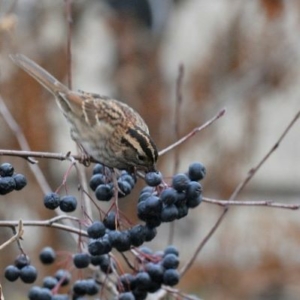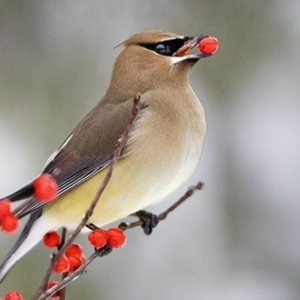Grow a Garden That Gives Back to Wisconsin Pollinators
Every spring, we look forward to seeing our gardens come to life after a harsh winter – and while we can take every step to prepare our gardens, we need the support of some important key players to ensure our gardens thrive: our Wisconsin pollinators!
Pollinators are a critical part of our ecosystem and contribute to the overall health of our environment. Unfortunately, due to habitat loss, degradation of natural resources, and the introduction of invasive species, our local pollinators need help.
The good news? There are many ways to help our Wisconsin pollinators thrive! Here’s what you need to know to get started.
The Plight of Wisconsin Pollinators
In Wisconsin, we have more than 400 species of native pollinators, including:
- Bee Species
- Beetles
- Butterflies
- Flower Flies
- Hummingbirds
- Moths
- Wasps
They play a vital role in helping us maintain our local gardens, and our local ecosystem relies on them for survival as well.
Understanding Pollinators and Their Role
Pollinators are essential to both natural ecosystems and agricultural systems, with over 85% of the world’s flowering plants and more than two-thirds of global crop species relying on them for reproduction.
Our Wisconsin pollinators transfer pollen from the male parts of a flower to the female parts of the same or another flower, helping plants reproduce. This increases biodiversity and promotes the regeneration of plants and trees, helping to ensure that our local ecosystems remain healthy and vibrant.
They also help improve crop yields and quality, making them a valuable resource for farmers and gardeners.
Challenges Facing Local Pollinator Populations
Wisconsin’s pollinators are facing some tough times. They need our help to overcome the obstacles that put their survival at risk, some of the most detrimental of which include:
- Habitat Loss: Our buzzing friends are losing their homes. Development and farming practices are taking away the wild spaces pollinators need for food and shelter.
- Pesticides: While aiming to keep crops safe from pests, these chemicals can also harm the pollinators we rely on. Even small amounts can harm their ability to find food and reproduce.
- Climate Change Impacts: Changing climates mess with the timing of flower blooming and pollinator activity, making it hard for them to do their job. Plus, extreme weather can wipe out the plants they depend on.
With the challenges facing Wisconsin pollinators, conservation efforts have never been more important. Creating pollinator-friendly environments, reducing pesticide use, and supporting ecological research are critical steps in safeguarding pollinator populations. Conservation helps pollinators and secures the future of our agricultural productivity and environmental health.
How to Create a Pollinator-Friendly Garden
Creating a pollinator-friendly garden is a rewarding way to contribute to the well-being of Wisconsin’s pollinator populations. By understanding the needs of these vital creatures and making thoughtful choices about plant selection and garden design, you can create a sanctuary that looks beautiful and provides crucial support for pollinators.
Here’s how to start planning and preparing your garden to become a haven for these essential species.
Plan Your Garden for Pollinators
By thoughtfully planning your garden, you can create a welcoming environment for pollinators that will help to ensure their survival and the health of your local ecosystem. Here are three important steps to get you started:
- Choose the Right Location: Select a spot in your yard that receives ample sunlight since most pollinator-friendly plants thrive in sunny conditions. Ensure the area is protected from strong winds that can hinder pollinators, and consider its visibility so that visitors can enjoy the beauty of the visiting pollinators. Having evergreens and dense shrubs nearby for pollinators to hide from predators; it makes a big difference in increasing the diversity of species you can attract.
- Design Your Garden Layout: When designing your garden, aim for a variety of plant types to attract various pollinators. Group similar flowers together to create a “target” for pollinators to find easily. Include plants of varying heights to add layers and make the space more appealing.
- Prepare the Soil: Healthy soil is the foundation of any thriving garden. Test your soil to determine its type and nutrient content, then amend it accordingly with organic matter to improve its fertility and drainage. Avoid chemical fertilizers and pesticides that can harm pollinators.
Select the Right Plants
Selecting the right plants is a key step in creating a pollinator-friendly garden. Native plants are typically the best choice, as they have evolved alongside local pollinators and are well-suited to meet their needs. Here are some native plants that are known to benefit Wisconsin pollinators:
- Milkweed (Asclepias spp.): Essential for monarch butterflies as it’s the only plant on which they will lay their eggs.
- Liatris: The native Liatris ligulistylis is a monarch magnet and one of their favorite food sources.
- Purple Coneflower (Echinacea purpurea): Attracts a variety of pollinators, including bees and butterflies.
- Wild Bergamot (Monarda fistulosa): Known for its fragrant leaves and flowers, it’s popular with hummingbirds and bees.
- Joe-Pye Weed (Eutrochium purpureum): A tall plant that’s a favorite of butterflies and bees.
- New England Aster (Symphyotrichum novae-angliae): Provides late-season nectar for bees and butterflies.
- Goldenrod (Solidago spp.): Supports a wide range of pollinators and blooms in late summer and fall.
It’s also important to consider the timing of plant blooming to ensure a continuous food supply. Pollinators need to access nectar and pollen throughout their active seasons:
- Early bloomers: Include plants like pussy willow (Salix discolor), forsythia (Forsythia sp.) and Cornelian Cherry dogwood (Cornus mas) to provide food sources as early as possible in the season.
- Mid-season bloomers: Liatris, Black-eyed Susan (Rudbeckia hirta) and bee balm (Monarda didyma) will keep your garden buzzing during summer.
- Late bloomers: Asters and goldenrod (Solidago spp.) will sustain pollinators into the fall.
- Our native grasses such as Big Bluestem (Andropogon gerardii), Little Bluestem (Schizachyrium scopularia) and Switch Grass (Panicum virgatum) provide season-long interest, food for pollinators AND the birds love to snack on their seeds over winter.
- There are many other native trees and shrubs that are also important for pollinators. Maples, birches, oaks, chokeberry, hemlock and white pine are all important hosts for our friends.
By incorporating a variety of native plants that bloom at different times, you can create a garden that’s not only vibrant and beautiful but also a vital resource for Wisconsin pollinators year-round.
Best Practices for a Thriving Habitat
Creating a sanctuary for pollinators goes beyond planting the right flowers. It involves adopting a gardening approach that ensures these beneficial creatures’ safety and health. By making conscious choices in how we care for our gardens, we can create a space that’s not only a haven for pollinators but also a place where they can thrive.
Safe Gardening Practices
Before we reach for the trowel, it’s important to consider the broader impact of our gardening practices. Here are some ways to create a garden that’s a safe haven for pollinators:
- Organic Gardening Tips: Embrace your garden’s natural balance. Using organic methods helps maintain a healthy ecosystem, which benefits pollinators and plants.
- Alternatives to Harmful Chemicals: Chemical pesticides can unintentionally harm pollinators. Fortunately, many natural alternatives can help keep your garden pest-free without placing pollinators at risk.
- Providing Shelters and Water Sources: Like any other living creature, pollinators need places to rest and resources to survive. Creating shelters and water sources in your garden can make a huge difference in their ability to thrive.
Ongoing Garden Maintenance
Maintaining a pollinator-friendly garden is an ongoing commitment. It’s about nurturing the garden throughout the seasons and ensuring that it remains a conducive environment for pollinators:
- Seasonal Care Tips: A well-timed gardening regimen can help ensure that your garden provides a continuous supply of resources for pollinators throughout the year.
- Encouraging Natural Predators: A healthy garden ecosystem includes predators that naturally manage pest populations. Encouraging these natural allies can help you maintain the balance without resorting to harmful chemicals.
By prioritizing safe gardening practices and ongoing maintenance, you’ll be doing your part to protect pollinators and support the local ecosystem. These small, thoughtful actions can make all the difference in creating a thriving habitat for our vital pollinator friends.
Create the Perfect Wisconsin Pollinator Garden with American Landscape
If you’re thinking about giving your garden a makeover to help out the local pollinators, having a professional landscaping team by your side can really pay off. They’ve got the know-how to create a space that’s a buzzing hub for bees and butterflies and a charming spot for you to relax and take in the beauty.
With American Landscape, you get that personal touch. They’ll work with you to figure out exactly what your piece of the great outdoors needs to become a pollinator paradise. They’ve got a track record of setting up gardens across Wisconsin that not only meet the needs of the local wildlife but are also a delight for the eyes.
Choosing American Landscape means you’re not just planting any old garden. You’re crafting a bespoke retreat for pollinators that’ll make your yard the talk of the town.
Need help creating a Wisconsin pollinator’s paradise? Contact American Landscape today




 Ryan and John both suggest
Ryan and John both suggest 
